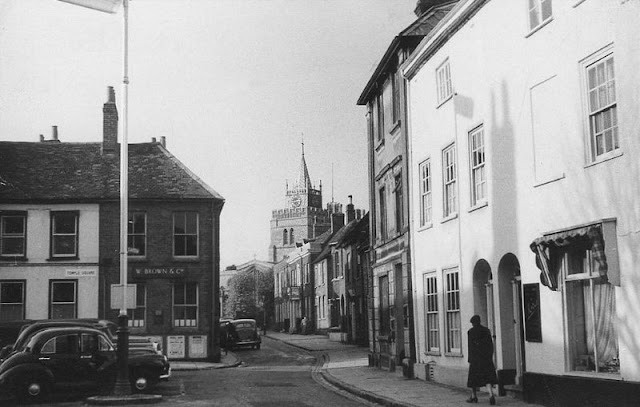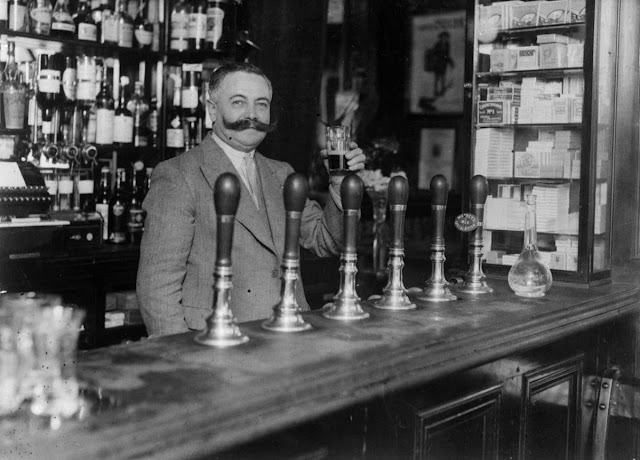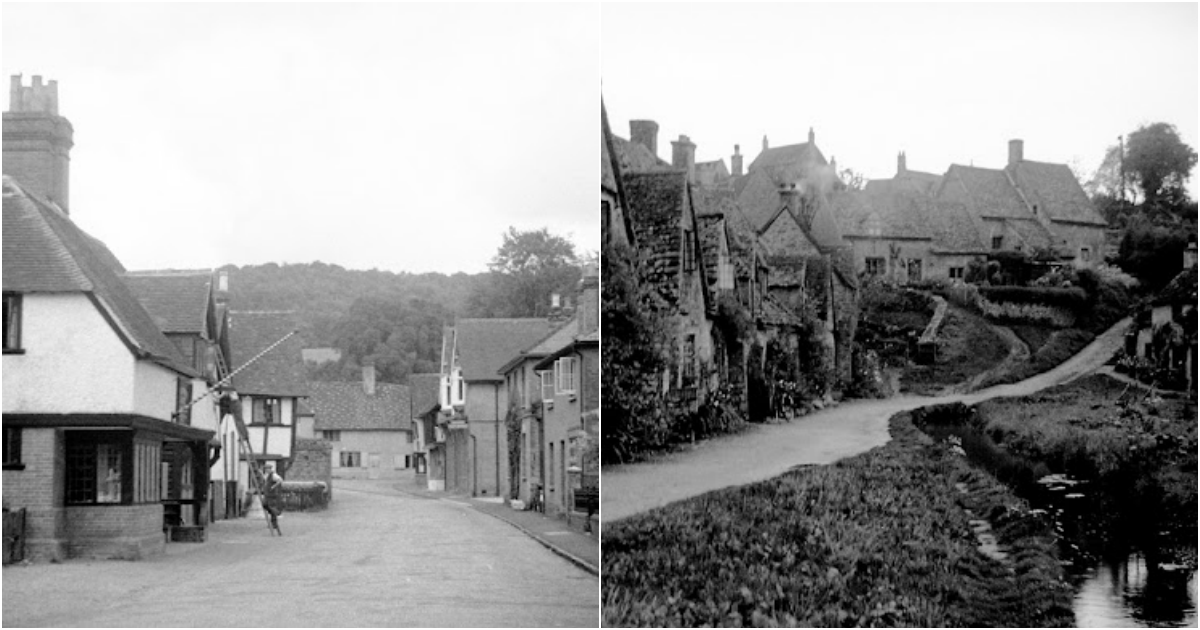After the British Nationality Act of 1948 was introduced hundreds of thousands of Commonwealth citizens were welcomed into the UK. These amazing black and white snaps show the faces of Commonwealth immigrants hoping to build a better life for themselves in Britain, while also helping rebuild the country's shattered World War Two economy.
In the years following the Second World War, there was a realization by the Government of a need to fill the labor market if Britain was going to reconstruct its economy. Officials came to the conclusion that if Britain wanted to rebuild the current state of affairs, they would have to find workers to fill the gaps in the market.
In order to solve the economic issue, the UK Parliament introduced The British Nationality Act of 1948, which in turn created the status of "Citizen of the United Kingdom and Colonies" (CUKC). The act meant that all citizens from Commonwealth countries, such as the Caribbean, Cyprus, Somalia and the West Indies, were granted free entry and actively encouraged to immigrate to Britain.
The event was famously marked on June 22 1948 when a passenger ship called the Empire Windrush arrived at Tilbury, Essex with 492 people from Jamaica on board. The Home Office estimated that between the years of January 1955 and June 1962 around 470,000 people immigrated to Britain and they came from all corners of the world.

|
| A group of seven hundred West Indian immigrants waiting in the Customs Hall at Southampton Docks after disembarkation, 27th May 1956. (Photo by Haywood Magee/Picture Post/Hulton Archive/Getty Images) |

|
| West Indian bus conductor Chandler McGhie makes sure that all his passengers are safely on board before pressing his bell, February 1955. (Photo by Thurston Hopkins/Picture Post/Getty Images) |

|
| Street scene in Brixton, London, where many immigrants have settled, 6th September 1952. (Photo by Charles Hewitt/Picture Post/Getty Images) |

|
| Three generations of the Constantinous, a Greek Cypriot family who live in Bayswater, London, 16th June 1956. The child is wearing the uniform of the Evzones, a Greek army regiment. (Photo by Bert Hardy/Picture Post/Getty Images) |

|
| Young children of various race playing in a school playground, in Cardiff, Wales, circa 1955. (Photo by Werner Rings/BIPs/Getty Images) |

|
| Newly arrived West Indian immigrants in the Customs Hall after their arrival at Southampton in England, 27th May 1956. (Photo by Haywood Magee/Picture Post/Getty Images) |

|
| Two Jamaican men talking in a street in Brixton, south London, 9th June 1952. The graffiti on the wall stands for “Keep Britain White”. (Photo by Express Newspapers/Getty Images) |

|
| A group of Somalians meet for a drink and a smoke at a cafe in Bute Town or “Tiger Bay”, Cardiff, 22nd April 1950. (Photo by Bert Hardy/Picture Post/Hulton Archive/Getty Images) |
 |
| Mr Siebert Mattison, an immigrant from St Anne, Jamaica now lives, sleeps and cooks in the same room with his Welsh wife and their three children, 22nd January 1955. (Photo by Thurston Hopkins/Picture Post/Getty Images) |
 |
| Immigrants from the West Indies at Victoria Station in London, 1956. (Photo by Hulton-Deutsch Collection/CORBIS/Corbis via Getty Images) |
 |
| A boatload of newly landed 700 immigrants disembark at Southampton customs, then go on to Victoria Station. London, late 1950s. Some of those waiting at the barrier at Victoria prefer not to show their faces. Up to 3,000 West Indian people a month arrived in the UK in the late 1950s. (Photo by Hulton-Deutsch Collection/CORBIS/Corbis via Getty Images) |
 |
| A black man walking down a Notting Hill Street, where race riots had recently taken place, circa 1959. The graffiti behind him reads, “No Colour Bar Here – Yet”. (Photo by Keystone/Getty Images) |

|
| People kneeling in prayer, Cardiff, Wales, circa 1955. (Photo by Werner Rings/BIPs/Getty Images) |

|
| A Catholic voluntary worker (right) meets a young Irish immigrant on her arrival in London, October 1955. (Photo by Thurston Hopkins/Picture Post/Hulton Archive/Getty Images) |

|
| Former tally clerk supervisor at Columbo docks George Barnard boarded an American ship bound for Calcutta in 1952 without a passport, 17th December 1956. After 4 years of sailing round the world and frequent spells in jail, he landed in Liverpool and was allowed to stay. (Photo by Thurston Hopkins/Picture Post/Getty Images) |
 |
| A West Indian immigrant to Britain is met by a Salvation Army officer at Southampton, 1956. (Photo by Haywood Magee/Picture Post//Hulton Archive/Getty Images) |
 |
| The multicultural community of Butetown or Tiger Bay in Cardiff, Wales, 1950. (Photo by Bert Hardy/Picture Post/Getty Images) |
 |
| The doorman and proprietor outside and Indian Restaurant in an Indian Community in London, 1956. (Photo by Thurston Hopkins/Picture Post/Getty Images) |
 |
| West Indian immigrants arrive at Victoria Station, London, after their journey from Southampton Docks, 27th May 1956. (Photo by Haywood Magee/Picture Post/Getty Images) |
 |
| A young boy playing with a train set at his home in the Cardiff docklands, 22nd April 1950. An ethnic mix of Arab, Somali, West African, West Indian and Greek families make up the population of this area, known as Bute Town or Tiger Bay. (Photo by Bert Hardy/Picture Post/Getty Images) |
 |
| A couple of young women and a baby in Bute Town, one of the poorest areas of Cardiff, 23rd January 1954. The area has a lively ethnic mix of families with Arab, Somali, West African, West Indian, Egyptian, Greek, and many other origins. (Photo by Bert Hardy/Picture Post/Getty Images) |
 |
| An ethnic mix of Arab, Somali, West African, West Indian and Greek families make up the population of the dockland area of Cardiff, known as Bute Town or Tiger Bay, 22nd April 1950. (Photo by Bert Hardy/Picture Post/Getty Images) |
 |
| Two young women in Bute Town, one of the poorest areas of Cardiff, 23rd January 1954. The area has a lively ethnic mix of families with Arab, Somali, West African, West Indian, Egyptian, Greek and many other origins. (Photo by Bert Hardy/Picture Post/Getty Images) |
 |
| An immigrant employee from Pakistan at work in a spinning mill in Bradford, West Yorkshire, the worsted-manufacturing and wool-trade centre of England, circa 1950. (Photo by Central Press/Getty Images) |
 |
| The end of a journey from India. One of the thirty seven Indians detained on board a boat at Dover is allowed to enter Britain, 21st November 1959. Here he sits at Victoria Station. (Photo by Hulton Archive/Getty Images) |

|
| Sikh children, two of them in turbans, who live in an Indian community in London, October 1955. (Photo by Thurston Hopkins/Picture Post/Getty Images) |
 |
| Children walk the streets in Bute Town, one of the poorest areas of Cardiff, 23rd January 1954. The area has a lively ethnic mix of families with Arab, Somali, West African, West Indian, Egyptian, Greek, and many other origins. (Photo by Bert Hardy/Picture Post/Getty Images) |

|
| A young woman and young girl in the yard of their house in Sophia Street, Bute Town, one of the poorest areas in Cardiff, 23rd January 1954. The area has a lively ethnic mix of families with Arab, Somali, West African, West Indian, Egyptian, Greek, and many other origins. (Photo by Bert Hardy/Picture Post/Getty Images) |



